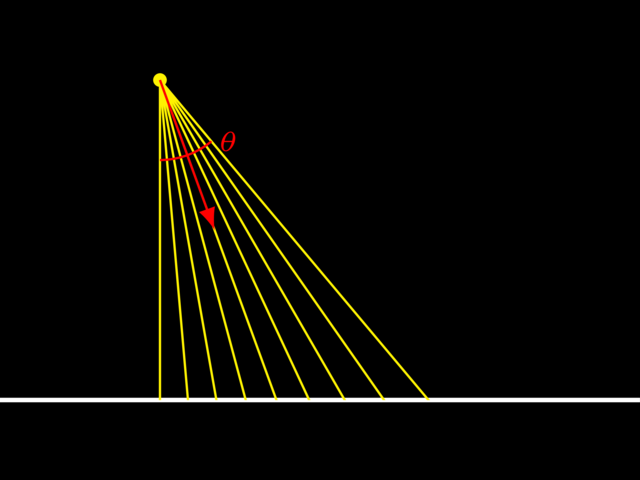1. Explanation
Contrary to omnidirectional lights, which send photons out in all directions, spot lights emit photons as if blocked by a cone:

A spot light has the following characteristics:
-
A position \(L\).
-
A central shining direction specified by a vector \(\vec v\) (shown in red in the above figure).
-
A beam angle \(\theta\).
The spot light sends lights to some location \(P\) if the angle between \(LP\) and \(\vec v\) is less than \(\frac\theta2\). We know the dot product \(\vec u \cdot \vec v\) gives us the cosine of the angle between the two vectors \(\vec u\) and \(\vec v\). Given that the cosine decreases with increasing angle, we get
\[\alpha < \beta \Leftrightarrow \cos\alpha > \cos\beta \qquad \textrm{for } 0 \leq \alpha, \beta \leq 90^\circ\]
Applied to our spot lights, this results in
\[\frac{P-L}{|P-L|} \cdot \vec v \geq \cos \frac\theta2\]